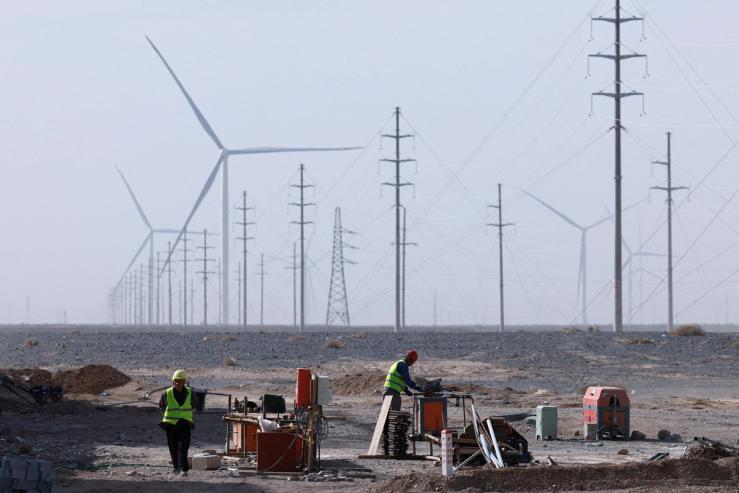John’s view
For more than a century, the world’s energy system has resembled the human circulatory system: a vast network of pipelines and shipping lanes pulsing with oil, gas, and coal. Just as our bodies depend on healthy blood flow, the global economy has relied not only on fuel itself, but on its smooth and uninterrupted movement.
That paradigm is beginning to shift.
We are entering a new era of energy sovereignty, where “power” — in both the energy and geopolitical sense — increasingly comes from producing energy close to where it is used. It’s a welcome and long overdue shift.
Since 1950, global fossil fuel consumption has grown nearly eightfold, and imports of coal, oil, and gas have risen by 12 times. Between 2019 and 2021, nearly three-quarters of countries around the globe were net fossil fuel importers. The United States has traditionally acted as the guardian of this system.
Yet today, rising geopolitical instability and a wave of economic nationalism threaten to disrupt the free flows of energy the system relies on — all at a moment when cheaper, cleaner alternatives are available.
Take Taiwan, which imports 96% of its energy. The island is home to some of the world’s most energy-intensive and essential infrastructure: semiconductor foundries that produce almost 60% of the world’s supply, including the majority of advanced chips for AI. A disruption to Taiwan’s energy supply wouldn’t just impact its own economy; it would ripple across the world.
In response, Taiwan has committed more than $32 billion through 2030 to strengthen its energy independence. Part of that process entails replacing aging nuclear and coal power plants with natural gas. And the country is also signing major investments in solar, offshore wind, and upgrades to grid infrastructure, which will raise renewable energy’s share of the electricity mix to 15% this year, up from just 5% in 2016.
The United States may not face the same existential threats as Taiwan, but it too is at an inflection point. The country’s demand for electricity is surging, in effect adding the entire electricity use of Poland (population: 37 million) to the US grid in just two years.
Solar, wind, geothermal, and advanced nuclear, alongside battery storage, are our best chance to meet soaring demand. Our private sector understands this. For example, Nucor, the US’ largest steelmaker, has secured 350 megawatts of renewable energy in Texas. Amazon, Google, and Meta have each contracted for multiple gigawatts of clean energy, with Amazon alone announcing 133 new renewable energy projects in 2023. These are business decisions that happen to benefit the climate — not climate initiatives designed to look good for business.
The energy systems these companies are investing in are stock-based: Once built, they generate power without needing a constant stream of fuel. There is no cartel for the wind. There are no shipping lanes for sunshine. Oil, by contrast, is a flow-based commodity — priced on a volatile global market and exposed to geopolitical risk, transport chokepoints, and inflationary spikes.
For most countries, true energy sovereignty will only come through rapid growth in stock-based renewables, even as gas and hydrocarbons continue to play a significant role. That insight is gaining traction globally. As nations pursue greater self-reliance, they are channeling investments toward technologies that offer lasting control.
Leadership in energy will thus shift, from those who drill and deliver to those who build and store.
As the world grows hotter and the costs of climate change mount, those that cling to costly, outdated energy systems will face higher prices, greater geopolitical threats, and backlash from consumers unwilling to accept the economic and security consequences of hydrocarbons.
Meanwhile, those that invest in cheap, abundant, and clean energy will gain a decisive competitive advantage for the rest of the 21st century; they’ll be more resilient, affordable, and self-sufficient.
Crucially, they will be truly sovereign, and in a volatile world, that isn’t just smart — it’s strategic.
In this article:
Room for Disagreement
Though the US under President Donald Trump is, of course, pursuing a different strategy, it is far from alone: Beyond traditional petrostates which have long relied on fossil fuels to drive development, Guyana has sought to drastically up its oil production in order to drive economic growth, while Brazil’s state-run oil company Petrobras in October won a license to explore for crude at the mouth of the Amazon River — just weeks before COP30 was due to begin.
And even as private-sector firms in the US drive development of renewables, the breakneck expansion of data centers is straining the country’s clean-power capacity, and driving increased demand for gas, analysts at S&P Global have noted.
John Kerry served as the 68th US Secretary of State and President Biden’s Special Presidential Envoy for Climate. He currently serves as Co-Executive Chair of Galvanize, a global investment firm backing the businesses, technologies, and assets positioned to define the 21st-century economy.
Notable
- After a half-century in which energy was not a tool of statecraft, complacency set in. That is now being upended, Jason Bordoff and Meghan O’Sullivan argue in Foreign Affairs.


